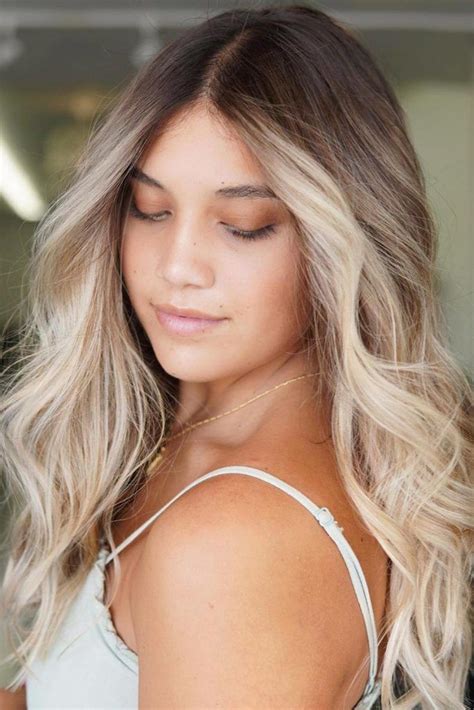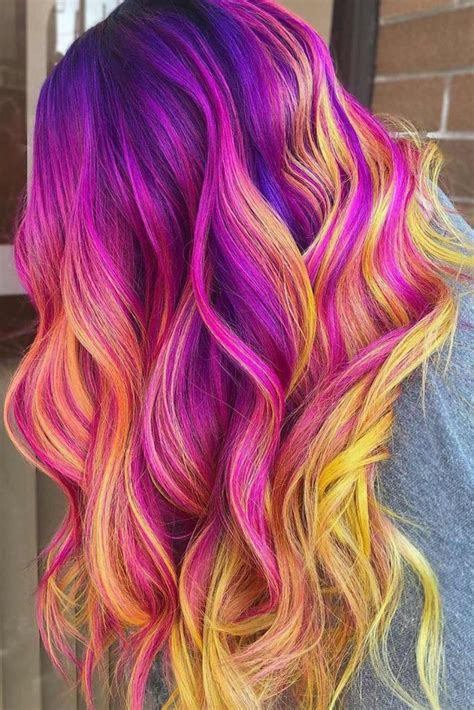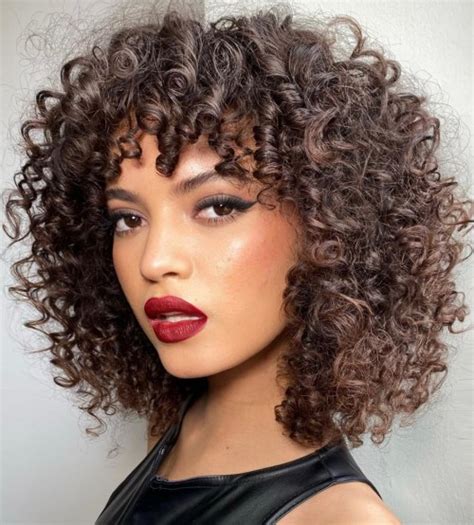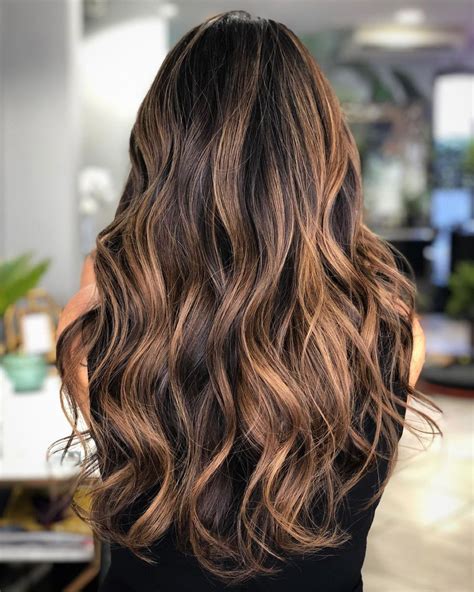Discover the science of hair color, identify causes of color changes, and learn about natural care and home remedies for restoration. Professional reconstruction options also available.
Understanding the Science of Hair Color
Contents
Hair color is determined by the amount and type of melanin present in the hair shaft. Melanin is a pigment that gives hair its color, ranging from blonde to black. The two types of melanin, eumelanin and pheomelanin, combine in different proportions to create the wide variety of hair colors we see.
As we age, the production of melanin decreases, resulting in gray hair. Additionally, exposure to sunlight, pollutants, and certain chemicals can also affect the melanin production in hair, leading to a change in hair color.
Understanding the science of hair color also involves recognizing the role of genetics. Genes inherited from our parents play a significant role in determining our hair color, as well as how it may change over time.
Furthermore, the process of hair coloring involves chemical reactions that alter the natural pigments in the hair. This can result in a temporary or permanent change in hair color, depending on the type of coloring treatment used.
Identifying Causes of Hair Color Changes
When it comes to understanding the reasons behind hair color changes, it’s important to consider various factors that can contribute to this phenomenon. One of the primary causes of hair color changes is aging. As we grow older, the production of melanin in our hair follicles decreases, leading to the gradual loss of pigment and the appearance of gray or white hair. Additionally, exposure to environmental elements such as sun, wind, and pollution can also lead to premature graying or fading of hair color.
Another common factor that can result in hair color changes is genetics. Our genetic makeup plays a significant role in determining the natural color of our hair, as well as the rate at which it may change over time. Furthermore, certain medical conditions and treatments, such as hormonal imbalances, thyroid disorders, and chemotherapy, can also impact the pigmentation of our hair, causing it to turn gray, thin, or even fall out.
In addition, lifestyle choices such as smoking, poor diet, and excessive stress can contribute to oxidative stress and free radical damage, which can ultimately affect the health and color of our hair. Furthermore, the use of chemical hair dyes, bleach, and other harsh styling products can cause damage to the hair shaft and follicles, leading to discoloration and loss of natural pigment.
It is important to note that the identifying the exact cause of hair color changes can be complex, as it often involves a combination of genetic, environmental, and lifestyle factors. By recognizing these various influences, individuals can take proactive steps to maintain the health and vibrancy of their natural hair color through a combination of proper nutrition, stress management, and gentle hair care practices.
Implementing a Natural Hair Care Routine
One of the best ways to get your natural hair color back is by implementing a natural hair care routine. This involves using gentle, sulfate-free shampoos and conditioners to prevent further damage to your hair. Look for products that contain natural ingredients such as coconut oil, argan oil, and aloe vera to nourish and protect your hair.
Additionally, it’s important to limit the use of heat styling tools and harsh chemical treatments to allow your hair to recover and restore its natural color. Instead, opt for air-drying your hair and using natural treatments such as hair masks made with avocado, honey, and olive oil to promote healthy hair growth and color.
Another essential step in a natural hair care routine is to eat a balanced diet rich in vitamins and minerals that support hair health, such as omega-3 fatty acids, biotin, and vitamin E. This can help nourish your hair from the inside out and support its natural color.
Lastly, to maintain your natural hair color, it’s crucial to protect your hair from environmental stressors such as UV rays, pollution, and chlorine. Wear a hat or use products with UV protection when spending time outdoors, and rinse your hair after swimming to remove chlorine and other chemicals that can strip your hair of its natural color.
Utilizing Home Remedies for Color Restoration
Are you tired of dealing with the constant upkeep of hair color treatments at the salon? Do you want to get back to your natural hair color without the use of harsh chemicals? If so, utilizing home remedies for color restoration may be the perfect solution for you.
One of the most popular home remedies for color restoration is the use of apple cider vinegar. This natural ingredient can help to remove chemical buildup from hair dyes and restore hair to its natural color. Simply mix equal parts apple cider vinegar and water, and use it as a rinse after shampooing. Over time, you may start to notice your natural hair color returning.
Henna is another natural remedy that has been used for centuries to restore hair color. It is a plant-based dye that can be used to cover gray hairs and bring back your natural color. While the process may take longer than traditional hair dyes, the results are often worth the wait. Plus, you won’t have to worry about exposing your hair to harmful chemicals.
In addition to apple cider vinegar and henna, there are other natural substances that can help restore your hair color. These include coconut oil, coffee, and black tea. Each of these ingredients has unique properties that can help revitalize your natural hair color and enhance its shine.
So, if you’re looking to get your natural hair color back without subjecting your hair to harsh chemicals, consider utilizing these home remedies for color restoration. Not only will you be taking a more natural approach to hair care, but you may also save time and money in the process.
Seeking Professional Hair Color Reconstruction
Seeking professional hair color reconstruction can be a great option for those looking to restore their natural hair color. Whether you’ve experienced significant hair color changes due to aging, chemical treatments, or environmental factors, a professional colorist can provide expert guidance and solutions to help you achieve your desired look.
When seeking professional assistance, it’s important to consult with a reputable salon or color specialist who has experience in color correction and restoration. A skilled professional will be able to assess your current hair color, identify any damage or discoloration, and recommend the best course of action to bring back your natural hair color.
During your consultation, the colorist may recommend treatments such as color removal, hair toning, or a series of color correction sessions to gradually restore your natural hair color. They may also offer advice on at-home hair care routines and recommended products to maintain and protect your newly restored hair color.
Professional hair color reconstruction is a personalized process that takes into account your natural hair color, skin tone, and overall hair health. By seeking the expertise of a professional, you can have confidence in achieving natural-looking results, as well as the knowledge and support to care for your hair moving forward.
Frequently Asked Questions
Is it possible to get my natural hair color back?
Yes, it is possible to get your natural hair color back with the right treatments and techniques.
What are some natural ways to restore my hair color?
Some natural ways to restore your hair color include using henna, applying a vinegar rinse, or using a black tea hair mask.
Are there any specific foods or supplements that can help restore natural hair color?
Foods rich in vitamins and minerals such as iron, zinc, and B vitamins can help maintain and restore natural hair color. Consider including leafy greens, nuts, and seeds in your diet.
Can I use hair dyes to match my natural hair color?
Yes, there are special hair dyes that are designed to match and enhance your natural hair color without causing damage.
How can I prevent further hair color damage?
To prevent further hair color damage, avoid excessive heat styling, use sulfate-free shampoos, and protect your hair from sunlight and environmental pollutants.
What should I do if I have gray hair mixed with my natural hair color?
Consider using natural remedies such as blackstrap molasses or sage tea rinses to cover gray hair and blend it with your natural hair color.
Should I seek professional help to restore my natural hair color?
If you’re unsure about the best approach to restore your natural hair color, it’s a good idea to consult a professional hairstylist or trichologist for personalized advice and treatments.











